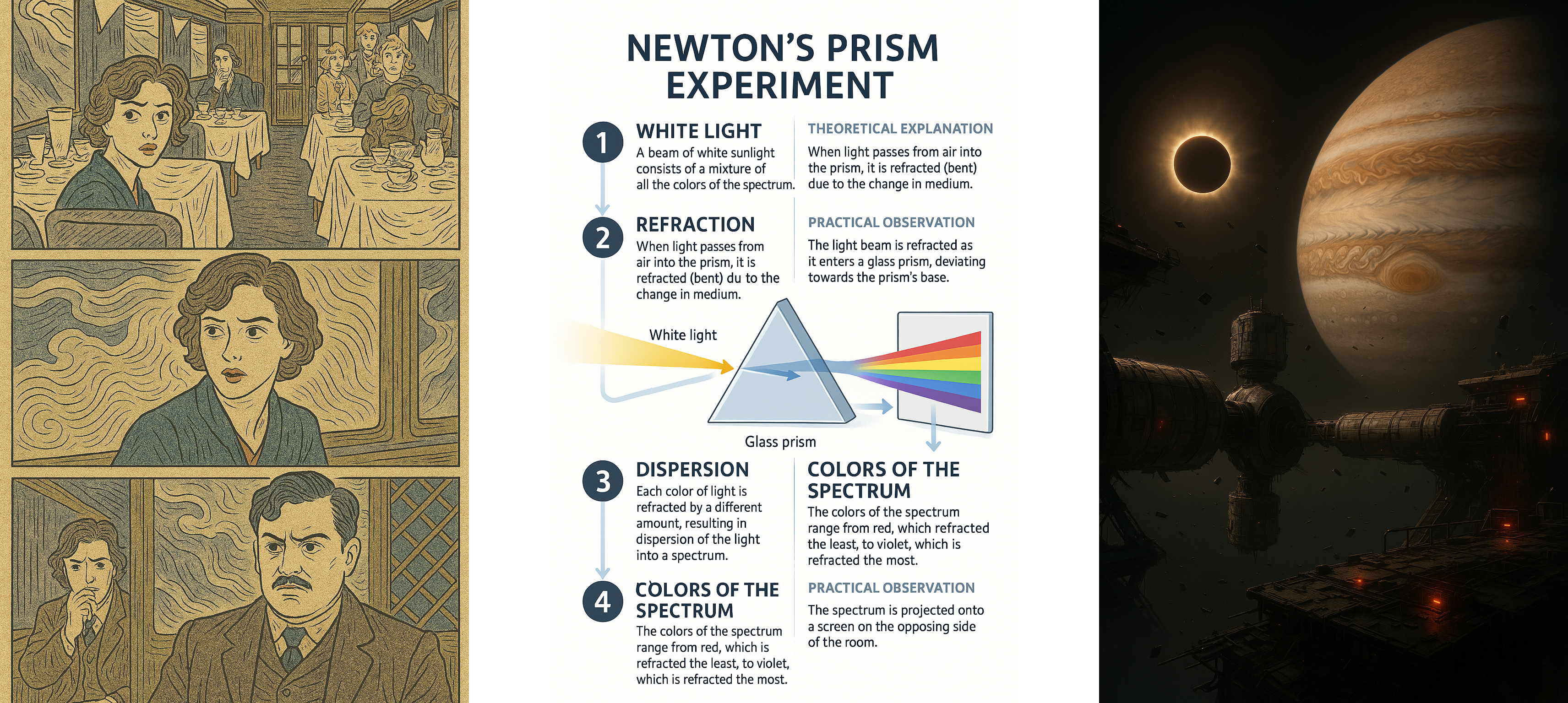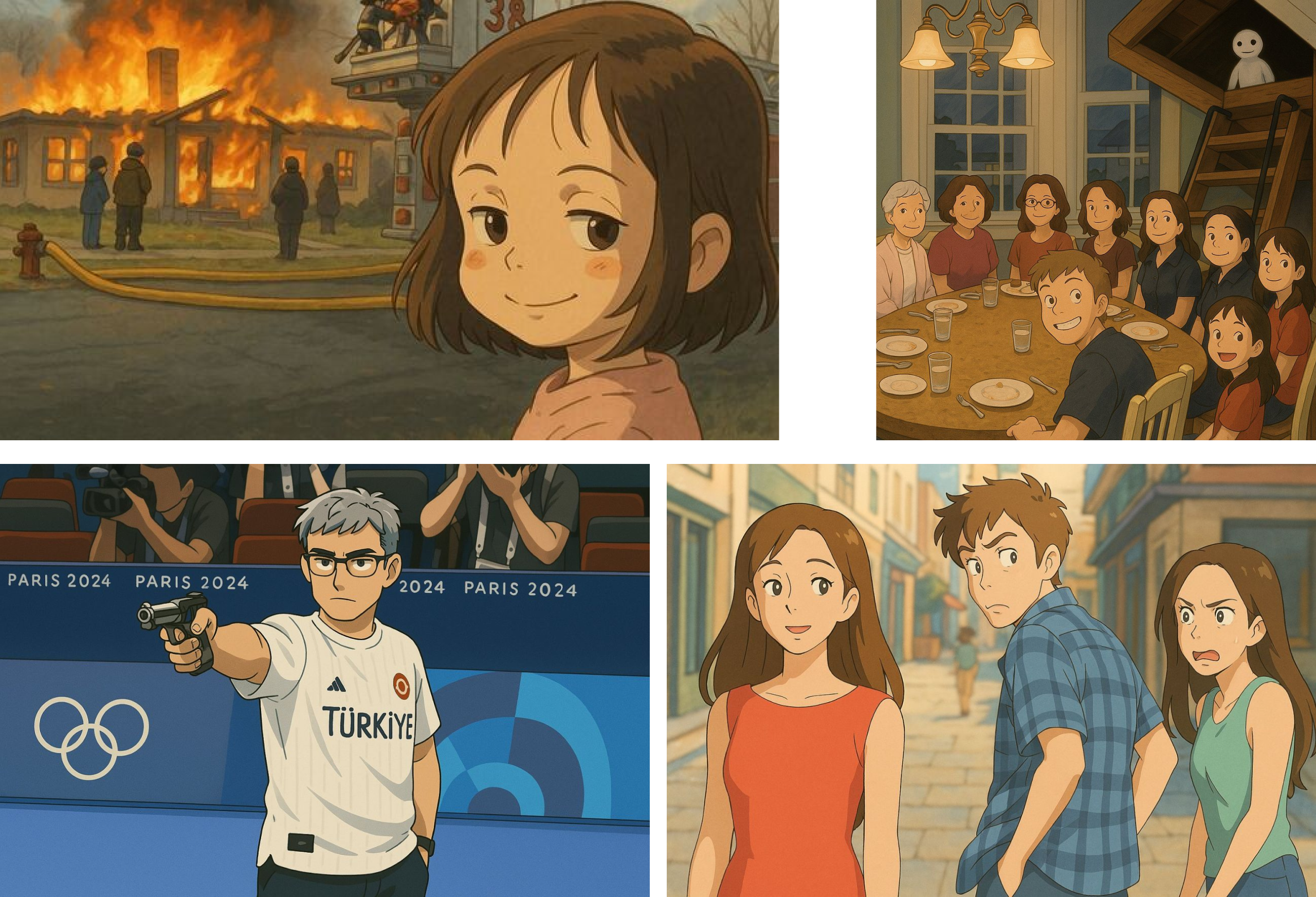OpenAI's New Image Generation Model: Competing with the Studios?
6 minutes
OpenAI's GPT-4o is turning heads with image generation capabilities that come remarkably close to professional quality. (And it's also surprisingly good at faking documents!) The model creates visuals comparable to professional services but does it in minutes instead of hours and at a fraction of the cost. This is both exciting and a bit concerning for the creative industry.

Three images generated using GPT-4o. Source: GPT-4o Image Generation: A Complete Guide + 12 Prompt Examples
We've put together a practical guide to help you explore these capabilities yourself, with plenty of examples and tips.
What makes GPT-4o's images stand out:
- Text that actually looks like it belongs in the image
- Consistent style that doesn't change unexpectedly between images
- Smart handling of how objects relate to each other in space
- Quality that rivals what you'd pay good money for professionally
For just $20/month, you can now create images that previously required expensive software and years of training. This opens up new creative possibilities for many people, but also raises important questions about where we're headed with AI-generated art.
Case Study: The Studio Ghibli AI Generation Phenomenon
Everyone's turning photos into Studio Ghibli-style art.
Studio Ghibli, the legendary animation studio founded in 1985 by Hayao Miyazaki and Isao Takahata, is famous for its painstakingly detailed hand-drawn animation. Their artists might create hundreds of individual frames just for a few seconds of gentle wind moving through trees. GPT-4o can mimic this beloved style in just seconds.

AI-generated memes using GPT-4o to mimic Studio Ghibli's distinctive animation style
Here's how it works:
- The AI analyzes the important elements in your original image
- It applies Ghibli's distinctive visual style using specialized algorithms
- It carefully balances keeping recognizable elements while transforming the overall look
The results can be quite magical—people are transforming everything from selfies to pet photos into images that look like they belong in "Spirited Away" or "My Neighbor Totoro." But there's a flip side to this creative fun.
When Miyazaki himself was shown AI-generated animation back in 2016, his reaction was memorable: "I am utterly disgusted. Whoever creates this stuff has no idea what pain is... This is an insult to life itself." The AI-generated clip, meant to impress, reminded him instead of a disabled friend's real-life struggles, the tech trivialized something he felt.
Hayao Miyazaki's reaction to AI animation in the 2016 documentary "Never-Ending Man"
His response highlights something important about AI art:
- Ghibli's work isn't just about a visual style—it represents a philosophy of careful craftsmanship
- AI can copy the look but misses the human intent, experience, and values behind it
This brings up questions worth thinking about:
- When does inspiration become something closer to copying?
- Should artists have more say in how AI learns from their distinctive styles?
- What's the difference between a human artist studying techniques and an AI instantly reproducing them?
These aren't simple questions, but they matter more as these tools become available to everyone.
Now, let's get to the news!
Generative AI Tools Updates
OpenAI's Latest Moves
OpenAI releases its latest image generation tool to free users, with ChatGPT gaining a million users in just one hour after launch. The company also plans to launch its first open-weight model since GPT-2, while reaching 20 million paying subscribers and securing a $40 billion funding round led by SoftBank.
Google's Gemini Update
Google extends Gemini 2.5 Pro access to free users, bringing simulated reasoning capabilities and top performance in the LMSYS Chatbot arena. The experimental model will be available on web first, with mobile rollout planned soon.
Runway Gen-4
Runway introduces a new AI model focused on maintaining consistency in character and object generation across multiple scenes and videos.
Key features:
- Character consistency across different settings
- Multi-angle scene generation
- Realistic movement and physics
- Seamless blending with existing footage
- Video generation with consistent objects
Amazon Nova Act
Amazon develops a browser-based AI agent development platform for automating web interactions.
Key features:
- Browser automation through Playwright
- Complex workflow management
- Integration with existing APIs
- 90% accuracy on UI interaction tasks
- Python-based testing and debugging tools
Luma Labs Camera Motion Concepts
Luma Labs creates a new technology for controlling camera movements in AI-generated videos through their Ray-2 model.
Key features:
- Precise camera movement control
- Combinable motion patterns
- Complex movement creation
- Integration with Ray2 video model
- Support for various camera perspectives
Ideogram 3.0
Ideogram upgrades their text-to-image AI model with enhanced text rendering and style control capabilities.
Key features:
- Improved text rendering accuracy
- Style reference system with 3-image input
- 4.3 billion preset style combinations
- Batch generation capabilities
- Enhanced photorealistic output
AI2 Paper Finder and CodeScientist
AI2 launches an LLM-powered academic literature search system that mimics human research processes. The company also open-sources CodeScientist, a new AI system for scientific discovery.
Other News
-
Anthropic publishes research on language model thinking processes
-
Research team develops brain-to-speech system with 90 words per minute capability
-
Poe chatbot adds new $5 monthly subscription option
-
Character.ai adds teen activity monitoring features for parents
-
Eleven Labs updates Studio with voice-based speech control options
Curated Gems: The Latest in Prompt Hacking
We've curated a list of the latest prompt hacking articles for you:
- Prompt Injection Exploits in ChatGPT Operator - A detailed analysis of security vulnerabilities in ChatGPT Operator, highlighting how prompt injection techniques could manipulate the AI into unauthorized actions and leak sensitive user data.
- Context Manipulation Attacks in AI Agents in Blockchain - A new study introducing context manipulation as a new attack vector against blockchain AI assistants, detailing the implications of memory injection attacks and potential protective measures.
- Microsoft AI Copilot Exposing Code from Private GitHub Repositories - An investigation revealing how Microsoft's AI assistant can access private GitHub repositories through cached data, raising significant security concerns about data persistence and credential exposure.
- Fun Tuning Prompt Hacking Gemini by Exploiting Gemini Free API - A fascinating discovery by UC San Diego and University of Wisconsin Madison researchers showing how fine-tuning APIs can be exploited to bypass AI safety measures, achieving up to 82% success rates in prompt injection attacks against Gemini models.
From Learn Prompting Team: Our AI Security Masterclass Now Features 9 Top Experts

Our 6-week Masterclass on AI Security now features nine AI security specialists who will share their cutting-edge insights and hands-on expertise with you.
Meet your instructors and guest speakers:
- Sander Schulhoff: CEO of Learn Prompting, creator of HackAPrompt, and leader of AI security workshops at Microsoft, OpenAI, Deloitte, Dropbox, and Stanford.
- Jason Haddix: Former CISO at Ubisoft, Head of Security at Bugcrowd, and a top-ranked bug bounty hacker, with extensive experience in penetration testing and AI security.
- Richard Lundeen: Principal Software Engineering Lead at Microsoft's AI Red Team, developing PyRit, a foundational AI security framework.
- Sandy Dunn: Cybersecurity leader with over 20 years of experience, project lead for the OWASP Top 10 Risks for LLM Applications, and an adjunct professor in cybersecurity.
- Joseph Thacker: Principal AI Engineer at AppOmni, top AI security researcher, and winner of Google Bard's LLM bug bounty competition.
- Donato Capitella: Offensive security expert and AI researcher with over 300,000 YouTube learners, teaching how to build and break AI systems.
- Akshat Parikh: Elite bug bounty hacker, ranked in the top 21 in JP Morgan's Bug Bounty Hall of Fame, and AI security researcher backed by OpenAI, Microsoft, and DeepMind researchers.
- Pliny the Prompter: Well-known AI jailbreaker, specializing in bypassing major AI model defenses.
- Johann Rehberger: Former Microsoft Azure Red Team leader, known for pioneering techniques like ASCII Smuggling and AI-powered C2 attacks.
Thanks for reading this week's newsletter!
If you enjoyed these insights about AI developments and would like to stay updated, you can subscribe below to get the latest news delivered straight to your inbox.
See you next week!
Valeriia Kuka
Valeriia Kuka, Head of Content at Learn Prompting, is passionate about making AI and ML accessible. Valeriia previously grew a 60K+ follower AI-focused social media account, earning reposts from Stanford NLP, Amazon Research, Hugging Face, and AI researchers. She has also worked with AI/ML newsletters and global communities with 100K+ members and authored clear and concise explainers and historical articles.
